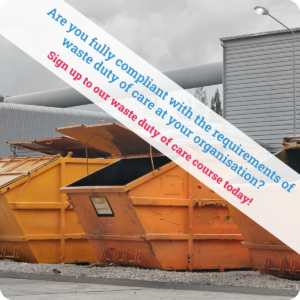Back in 2001, a law was brought into force called The Control of Pollution (Oil Storage) (England) Regulations 2001 (SI 2001/2954). This was specifically designed to reduce the incidents of oil pollution from organisations that stored larger quantities of oil outside, either for transport fuel use, heating or other manufacturing and lubrication activities.
This blog takes a look at what the requirements of this law are and reminds us what obligations are placed on organisations that store oil on site.
What are the thresholds?
These regulations apply to oil including petrol and diesel that is stored in containers larger than 200 Litres outside and above ground. In Scotland and Northern Ireland, it also applies to oil stored inside buildings, but this requirement is just best practice in England.
The 200 litre threshold was chosen as the most common container for storage of oil is a 205 Litre drum; therefore these regulations apply to oil stored in those drums. The Regulations cover fixed tanks, intermediate bulk containers (IBCs), drums and mobile bowsers.
The Regulations don’t apply to oil stored wholly underground, to domestic oil storage below 3500 Litres, to oil refineries and distribution, and to agricultural oil storage on a farm, which has its own regulations.
What types of oil apply?
Any types of oil including petrol and diesel apply, but waste oil storage does not apply as that is dealt with in other law (environmental permitting and exemptions).
What are the requirements?
The container storing the oil must be structurally sound, and housed in (or on) secondary containment. This is usually a bund, or for smaller oil drums a suitable drip tray. How you test the structural integrity of your tank is up to you, but you need a way of checking that the tanks aren’t rusting from the inside out.
The secondary containment must be able to store 110% of the container’s capacity, or if there are multiple containers, 110% of the largest container, or 25% of the total volume of the aggregated storage capacity, whichever is greater.
Importantly, for all of these calculations it’s not just 110% of the oil you have stored in the tank at any time, it’s the containers capacity, even if you never fill it full.
A lot of organisations will use integrally bunded tanks to store oil. These are a tank within a tank where the gap between the two allows for 110% of the inner tanks volume. The regulator (Environment Agency) is keen to stress that not all double skinned tanks meet this requirement as the gap between some double skinned tanks is too small to cope with the 110% requirement. If this is the case with your tank it will need additional secondary containment (like a bund).
The secondary containment must be situated where risk to impact (from vehicles for example) is minimised.
Pipework
The regulations are specific about pipework attached to, or feeding oil tanks. Fill or draw off pipes which are routed through the bund walls must be adequately sealed to keep the bunds integrity.
Where the fill pipe is not within the secondary containment, a drip tray must be used to catch oil during tank filling. Sight gauges, vent pipe or other ancillary pipework or equipment (other than a fill pipe or draw off pipe must be situated within the secondary containment system.
Where pipework leads underground to a fill station for example, they must not have any mechanical joints except where there is visible access, they must have adequate facilities for detecting leaks, or if not must be leak tested every 5 years for pipes with mechanical joints, and every 10 years for pipes with no mechanical joints.
Other requirements
Where the tank is filled from a location that the tank and vent pipe cannot be seen, then an automatic overfill protection device must be fitted.
Where the tank includes a flexible hose for delivering oil, the end of the hose must be fitted with a valve (usually as part of a fill nozzle) to prevent oil leaking when not in use.
This hose, when not being used, must be situated in a secure cabinet which is locked shut when not in use and has a drip tray beneath, or it located within the secondary containment system.
Any storage of oil shouldn’t be situated less than:
(a) 10 metres away from any inland freshwaters or coastal waters; or
(b) 50 metres away from a well or borehole.
To do so risks a notice being served by the Environment Agency, if it considers there is a significant risk of polluting controlled waters. This might involve moving or taking other precautions relating to the oil storage.
The Regulations can be viewed here.
Guidance is available here.
